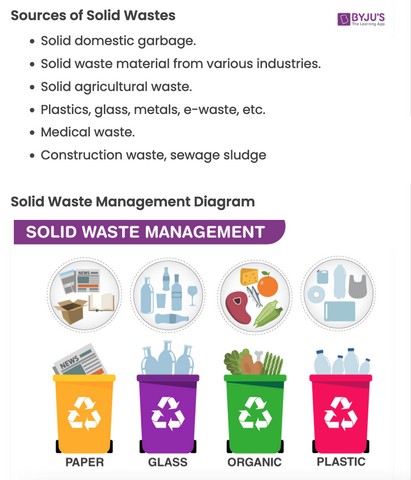Sarawak, like many regions in Malaysia, is experiencing rapid urbanisation and industrialisation. With these developments come challenges in managing the growing amounts of solid waste generated by households, businesses, and industries. Solid Waste Management (SWM) is crucial to maintaining environmental sustainability, ensuring public health, and creating a foundation for a circular economy.
Malaysia’s History of SWM: An Overview
The Solid Waste Management (SWM) scene in Malaysia has undergone significant changes since its federalisation. Before 2006, SWM fell under the Local Authority Act 171, but in 2007, the Solid Waste and Public Cleansing Management Act (Act 672) was introduced, followed by the establishment of SWCorp Malaysia in 2008. The federalisation of SWM became formal in 2011, and further regulations were introduced, such as Separation at Source in 2015, with enforcement following in 2016.
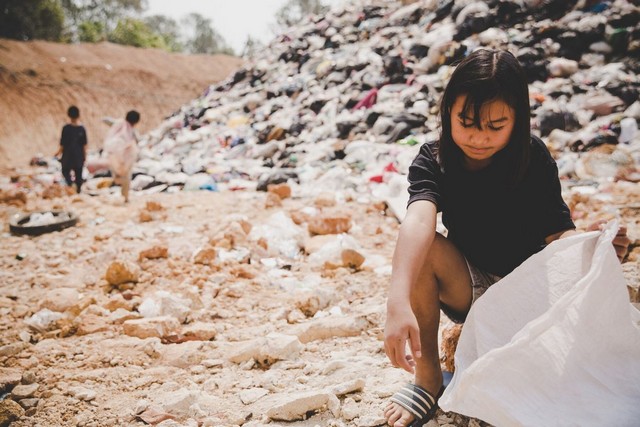
Despite these efforts, solid waste generation has been rising sharply, attributed to a number of multifaceted causes. Malaysia as a whole faces a growing waste problem, with 137 landfills in operation as of January 2024. Of these, 21 are sanitary landfills, while 126 non-sanitary landfills continue to release harmful gases and leach into the environment. Additionally, illegal dumpsites and open burning of domestic and scheduled waste have exacerbated the issue, worsened by imported waste in recent years. With more urban development in place, sufficient land for landfills is becoming scarce, and the increased waste generation from urbanisation only led to waste escalating SWM costs.
According to a report by Kementrian Ekonomi in 2021, Malaysian households generated 42,672 tonnes of waste daily in 2021, significantly higher than the global average per capita waste production. This amount is said to be equal to the full capacity of 140 Boeing 747 planes of trash, every single day. Of that amount, less than 10% of national household waste was recycled. A separate study also reveals that solid waste generation in Malaysia has gone up 91% over the past 10 years alone, with key drivers being urban development, higher salaries and shift towards commercialism and consumerism, especially with the boom of online shopping.
To address these issues, the Malaysian government recently launched the Circular Economy Blueprint for Solid Waste (2025-2035). This blueprint introduces legislation like the Extended Producer Responsibility (EPR) scheme, zero-waste-to-landfill certifications for manufacturers, data system enhancements, waste-eco parks, and incentive programs aimed at promoting recycling.
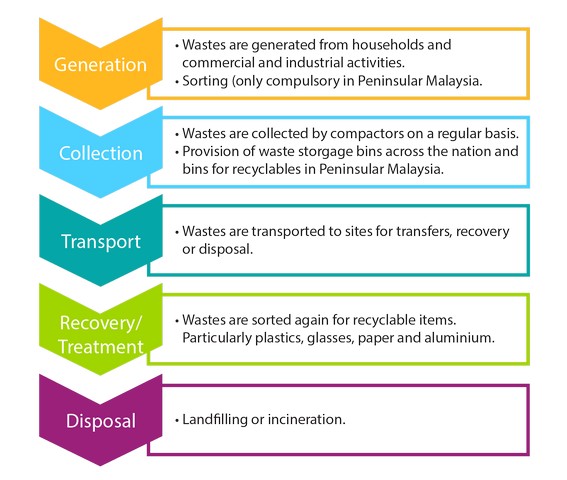
Current State of SWM in Sarawak
Sarawak’s waste management system follows a different path than the other regions of Malaysia. Rather than being monitored by dedicated federal agencies, SWM in Sarawak is still under local authorities (LAs) via the Local Authority (Cleanliness) By-Laws 1999.
This SWM system faces several challenges, including limited budgets, rural accessibility issues, and a significant number of unsanitary landfills. According to a study conducted in 2020, of the 46 landfills, only five are sanitary, with only three of those equipped with leachate treatment facilities, in stark contrast to 7 sanitary landfills in the Peninsular Malaysia, all capable of treating the leachate produced. Of the landfills, only one was capable of treating municipal solid waste and scheduled waste, including hazardous and pathological variants. With 1.7% of hazardous waste in the MSW of larger LAs in Sarawak, Sarawak tops the list of hazardous waste percentage in MSW, indicating act or awareness of segregating hazardous waste from MSW for proper disposal is comparatively low in Sarawak. Furthermore, the dumpsites are usually not properly gated and guarded, hence leaving them vulnerable to scavengers pillaging for recyclable metals. While prohibited, the lack of stringent enforcement also made it common to find construction and demolition wastes at dumpsites.
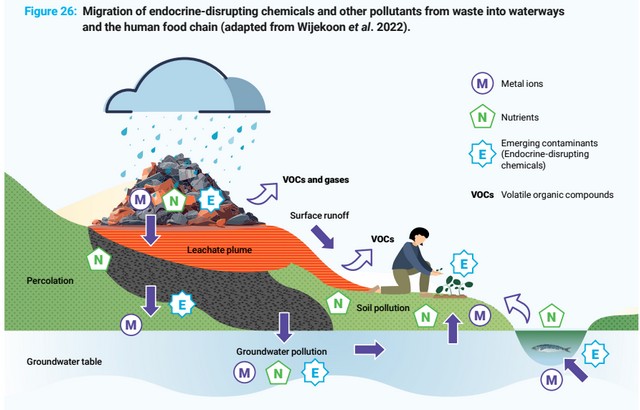
The large number of rural areas pose additional complications due to their remoteness, leading to lower waste collection rates and increased illegal dumping in rivers and open burning, eventually causing soil contamination and waterway pollution due to leaching. In 2020, the national rural coverage of municipal solid waste management stood at 66%, with Sarawak’s coverage being even lower due to limited accessibility to rural settlements in the remote areas. The same study also revealed that Kuching has the highest daily MSW generation of 690 tonnes followed by Miri (281 tonnes), Serian (176.7 tonnes) and Betong (70 tonnes).
As of 2023, the Sarawak’s waste management councils have collect approximately 718,456 tons of municipal waste annually, which end up in landfills. Based on the data provided from 2019 until 2020, more than 30% of the councils’ revenue was spent for that purpose. Examination of the waste composition also showed results that are consistent with the national household waste composition; food waste is the most abundant (44.5%), followed by plastic (13.2%), diapers (12.1%) and paper (8.5%).
Aware of such issues, the Sarawak government made efforts like supporting the Agenda 21 program initiated by the United Nations to promote sustainable development at the local level. Some LAs, such as Miri, Mukah and Dalat, have implemented plastic bag bans and expanded recycling infrastructure, while others like Serian and Sri Aman have introduced composting and used-paper programs in schools and communities. Some LAs like Saratok and Lawas also hired private agents to collect used cooking oil and implemented bio-cleaning machines for food wastes in markets. Even so, the waste management and recycling culture in Sarawak is found to be relatively weak when compared with the Peninsular.
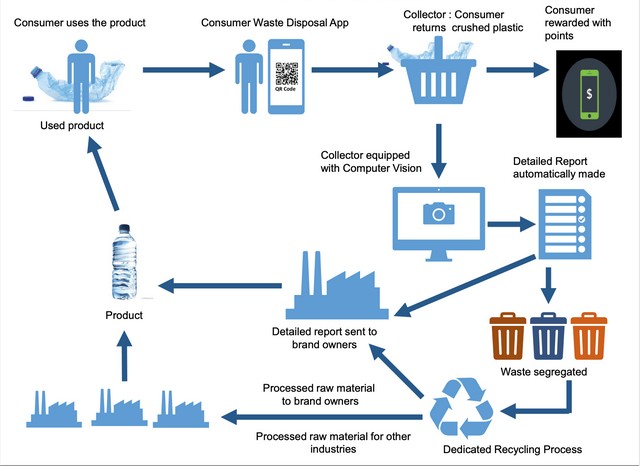
On a larger scale, more efforts are being made across industries to minimise and repurpose waste. For instance, the Sarawak Timber Industry Development Corporation (STIDC) has developed timber processing zones to produce wood products such as wood pellets and engineered wood out of scraps that were traditionally discarded as part of their sustainability initiative to reduce wastage, with the ultimate goal of cutting out waste entirely.
More recently, the Sarawak Premier has announced plans to replace landfills with hi-tech incinerators to manage waste more sustainably. The state Economic Planning Unit is currently studying the feasibility of setting up two incinerators, one each for the northern and southern zones of Sarawak. The study, expected to be completed by the first quarter of 2025, will explore waste-to-energy technology.
SWM and Sarawak’s Vision for a Circular Economy
Sarawak is committed to adopting sustainable practices as part of its development goals, in line with the state’s Post-COVID-19 Development Strategy (PCDS) 2030. This vision includes a focus on environmental sustainability and integrating circular economy principles. Solid waste management is a vital part of achieving this goal, as it directly influences how materials are used, reused and recycled, preventing the depletion of natural resources.
While Sarawak has made some strides in recycling, it still lags behind more advanced economies, including that of the Peninsular. This highlights the need for increased infrastructure, better policies, and greater public awareness to support the state’s shift toward a circular economy.
Challenges Facing SWM in Sarawak:
- Geographical Disparities: Sarawak’s unique geography, consisting of urban centres, small towns, and remote rural areas, creates uneven access to waste management services. While cities like Kuching and Miri have established waste collection systems, rural communities often rely on informal methods, including burning or burying waste.
- Insufficient Recycling Infrastructure: Sarawak’s recycling efforts are hindered by a lack of sufficient infrastructure, especially in rural areas where collection services are limited. Additionally, there are few material recovery facilities (MRFs) capable of processing recyclable materials at scale.
- Public Awareness and Engagement: Waste separation at source is not a widespread practice in Sarawak. Many residents are unaware of the benefits of waste segregation and recycling, which leads to lower recycling rates. Educating the public and encouraging participation in recycling initiatives are key to addressing this issue.
- Funding and Investment: SWM in Sarawak requires substantial investment in technology, collection systems, and processing facilities. The state government has made strides, but the current financial resources are insufficient to meet the growing demand for more advanced waste management systems.
Opportunities for Improvement
There are significant opportunities for Sarawak to enhance its SWM system and contribute more effectively to the circular economy. Key areas of focus include:
- Upgrading Infrastructure: Expanding waste collection and processing infrastructure, especially in rural areas, is critical to improving Sarawak’s SWM. The state government can consider public-private partnerships to build more recycling facilities and waste-to-energy plants that help reduce landfill dependence.
- Policy Reforms and Incentives: Introducing stronger regulations to support waste segregation at the source, coupled with incentives for households and businesses to recycle, can accelerate Sarawak’s progress. Extended producer responsibility (EPR) schemes could also encourage manufacturers to take responsibility for the end-of-life disposal of their products, reducing the overall waste burden.
- Waste-to-Energy Initiatives: Sarawak could explore waste-to-energy (WtE) solutions to transform non-recyclable waste into energy. This would not only reduce the volume of waste in landfills but also contribute to the state’s renewable energy goals. By converting waste into biogas, electricity, or heat, Sarawak could create a more sustainable energy mix and reduce greenhouse gas emissions.
- Engaging with the Community: Public awareness campaigns focused on the importance of waste segregation and recycling can drive greater participation in SWM efforts. For example, local schools and community groups could organise waste collection drives or establish more small-scale recycling centres across strategic locations to promote sustainability.
What Laymen Can Do to Help
The involvement of the local community is essential to improving SWM and making Sarawak a cleaner, greener state. Here are some practical steps that individuals can take:
- Segregate Waste at Home: Households play a critical role in ensuring that recyclable materials are separated from general waste. By setting up simple waste segregation systems at home, Sarawakians can reduce the burden on landfills and make it easier for waste to be recycled.
- Participate in Recycling Programs: Residents can actively participate in local recycling initiatives, such as curb-side pickup services or designated recycling drop-off points. Many local councils have started offering these services, and using them can significantly reduce household waste.
- Composting Organic Waste: With a large portion of household waste in Sarawak being organic (e.g., food scraps, garden waste), composting is an effective way to reduce waste while enriching the soil. Communities in rural areas can benefit from composting programs, turning organic waste into valuable soil nutrients for agriculture.
- Avoid Single-Use Plastics: Reducing reliance on single-use plastics can greatly decrease the amount of waste generated. Simple actions, such as carrying reusable bags, water bottles, and containers, can make a significant difference in reducing plastic pollution.
- Support Local Environmental Initiatives: Sarawakians can also get involved in community-driven environmental projects. Many organisations are working to raise awareness and address waste issues through cleanup campaigns, educational workshops, and sustainable living initiatives. By supporting these efforts, individuals can amplify their impact.
Sarawak is at a critical juncture in its journey towards sustainable waste management and a circular economy. While significant challenges remain, particularly in rural areas and in scaling up recycling infrastructure, there are also numerous opportunities for improvement. With increased investment, stronger policies, and community engagement, Sarawak can overcome the barriers to effective waste management and move closer to a circular economy. Ultimately, small changes at the household level, when multiplied across the population, can lead to meaningful progress in managing waste and conserving resources for future generations.
References
- “Britannica — Solid Waste Management”
- “United Nations Environment Programme — Solid Waste management”
- “Circular Economy and Solid Waste — United Nations Industrial Development Organisation (UNIDO)”
- “Global Waste Management Outlook 2024“
- “Municipal solid waste management in Malaysia: Practices and challenges, Waste Manag. 2009”
- “World Bank Solid Waste Management”
- “Solid Waste Management in Malaysia: An overview”
- “Municipal Solid Waste Management in the Sarawak State of Malaysia and the Way Forward”
- “Dr Sim: Waste collected by councils increasing every year”
- “Circular Economy Solid Waste Management — Kementerian Ekonomi”


